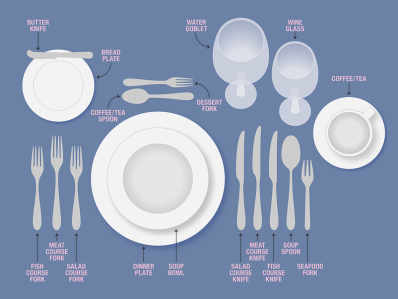- Poker Guide
- Learn to Play Poker: Getting Started
- Poker Game Variations
- Texas Hold ‘em Guide
- Learn to Play Texas Hold ‘em
- Hold ‘em Gameplay
- Texas Hold ‘em Strategy
- Beginner Hold ‘em Strategy
- Intermediate Hold ‘em Strategy
- Blackjack Guide
- Learn to Play Blackjack
- Blackjack Dealing
- Blackjack Strategy
- Blackjack Resources
- Roulette Guide
- Learn to Play Roulette
- Roulette Strategy
- Roulette Types and Variations
- Roulette Resources
- Slots Guide
- Learn to Play Slots
- Slots Games and Variations
- Slots Tips
Roulette wheels come in many sizes, suitable for playing at home, social clubs or in the casinos. The standard casino roulette wheel is precision engineered, mainly wooden. Roulette often seems like a complicated game to many beginning gamblers. In truth, it’s one of the simplest casino games to learn. Once you absorb and apply these roulette basics, you’ll discover that the game moves at an easy pace and most of the bets are straightforward.
The object of roulette is a simple one:
Guess which numbered divit a small ball will land on once the croupier has spun the wheel. If you guess it right, you win!
While roulette is a fairly basic concept, there is a lot to know, and newcomers to the game may be alarmed by all of the options they see on the board.
Let’s go over some of the basic aspects if you are learning to play roulette for the first time.
The Roulette Wheel
On American roulette wheels, there are 38 numbers: 1 through 36, 0 and 00. The numbers are either red or black, and the 0 and 00 slots are green. Each round, the horizontal wheel is spun by the croupiers, and a small ball is released onto it. The ball bounces around inside the wheel as it spins, ultimately landing on one of the numbers, which is then declared the winner.
The Board
Next to the wheel you’ll find the board. At first glance, it looks like a long, green table with a red and black numbered checkerboard and some other boxes on the side. While it may seem like a lot to take in, once you get used to it, you’ll understand your options.
Here is the basic layout of the board:
- If you are standing at the bottom of the board, the top choices are 0 and 00, which are green.
- Next comes the numbers. The red and black square boxes are lined up three across and nine down, and arranged numerically across (the top row is 1,2,3, then the next row is 4,5,6 and so forth). The color of the boxes corresponds with the colors of the numbers on the wheel.
All of the aforementioned boxes are what is known as inside bets, while the rest of the options are outside bets, but more on that later.
- At the very bottom, there are three additional green boxes that each read “2 to 1.”
- Now to the side options. If we round the corner to the left, you’ll see more green boxes. The top row, the one closest to the red and black grid, has three long boxes that correspond with four of the numbered boxes. The far left one reads “1st 12,” the center box reads “2nd 12” and the far right reads “3rd 12.”
- Beneath that are six more green boxes. Starting from the left, they read “1-18,” “Even,” “Red,” “Black,” “Odd” and “19-36.”
Roulette play uses a ball, table, wheel, and chips.


Entering the Game
If you want to play roulette, you have to trade in for special chips that are a single color. They will each be worth a single denomination of money, and are good only at the roulette table. At a brick and mortar casino, each player will get chips that have a color unique to him or her, which prevents bets from getting mixed up once they are on the board.
You’ll want to make sure to note the denomination of the chips and a sign designating the minimum bet at the table. If, for example, the minimum is $5, you need to bet at least $5 each round either inside, outside or both, meaning you can’t bet $2 inside and $3 outside.
Each roulette player bets with different colored chips.
Types of Bets
So now that we have a general idea of the layout of the board, we come to the most important part of playing roulette: betting.
As we briefly touched on, there are inside and outside bets to be made. In general, an inside bet has longer odds, but a better payout. Outside bets offer a better chance of winning, but you’ll win less.
Inside bets can be as simple as placing your entire stack of chips on a single number and, if that number hits, you get a 35-1 payout. Betting on a number that wins is the best payout you can get in roulette, but it is also has the steepest odds. When it comes to inside betting, there are also other options as well.
For example, you can straddle the line between any two adjacent numbers, like 1 and 2, or 1 and 4. You can also place your chips on a corner where four boxes meet, like 1, 2, 4 and 5. While both of these options increase your chances of winning over betting on a single number, you will win less if one of the numbers does hit.
Outside bets are made in the green boxes that surround the red and black numbers. For the most part, the boxes will be clearly marked. A bet on “Even” means you win if any even number comes up. Same goes for a bet on “Black,” or “1-18.”
Moving closer to the board, we have the 1st, 2nd and 3rd 12 boxes. A bet on any of these simply means that you are betting that a number in one of the thirds – 1 through 12, for example – will win. Similarly, the three boxes on the bottom – the ones that read “2 to 1” will place bets on any given row of numbers. So, a bet on the far left box will win if either 1, 4, 10, 13 on down to 34 hits. The “2 to 1” label means you double your bet if you win.
It’s important to keep in mind that 0 and 00 are neither red, black, even, odd, or fall into any of the thirds, so you’ll always lose if you place an outside bet and either 0 or 00 hits.
Placing your Bet
There is a designated period of time that players are permitted to place their bets. If a player has already bet on the number or place you want to play, it’s okay to stack the chips – the different colors will help keep track of who has bet on any given number.
The croupier will spin the wheel and, shortly thereafter, will wave his hand over the board and say “No more bets!” At that time, all bets are final.
When a number hits, the croupier will put a marker on the winning number and clear all losing bets. If you get lucky, your winnings will be stacked on the board next to your bet. Wait until all of the winnings are placed before you take yours, and wait until the dealer pulls the marker to place your bets for the next round.
When you’re done, make sure you switch out your colored chips to standard casino chips before you leave the table.
Remember to stay realistic about the long odds on this popular game of chance. Approach roulette with the sober realization that, with a house advantage of 5.26 percent on the American wheel, roulette is among the worst bets in a casino. Despite the odds, you can still use some simple strategies to stretch your roulette bankroll and enjoy the thrill of the spin. This article contains a few tips that can help you improve your chances of winning.
Roulette is a drain on your wallet simply because the game doesn’t pay what the bets are worth. With 38 numbers (1 to 36, plus 0 and 00), the true odds of hitting a single number on a straight-up bet are 37 to 1, but the house pays only 35 to 1 if you win! Ditto the payouts on the combination bets. This discrepancy is where the house gets its huge edge in roulette.
Starting with the basics
Strategy is critical if you want to increase your odds of winning. The first time you play roulette, the players sprinkling the layout with chips may look as if they’re heaping pepperoni slices on a pizza. You can make many different bets as long as you stay within the table’s maximum limits. Consequently, few players make just one bet at a time.
Of course, the more bets you make, the more complicated and challenging it is to follow all the action. Here are two possible plans of attack to simplify matters:
- Stick to the table minimum and play only the outside bets. For example, bet on either red or black for each spin. This type of outside bet pays 1 to 1 and covers 18 of the 38 possible combinations.
- Place two bets of equal amounts on two outside bets: one bet on an even-money play and the other on a column or dozen that pays 2 to 1. For example, place one bet on black and one bet on Column Three, which has eight red numbers. That way, you have 26 numbers to hit, 4 of which you cover twice. You can also make a bet on red and pair it with a bet on Column Two, which has eight black numbers. Again, you cover 26 numbers, and 4 of them have two ways to win. Pairing a bet on either red or black with Column One (or on one of the three dozens) covers 24 numbers, and 6 numbers have two ways of winning. Spreading bets like this won’t make you rich, but it does keep things interesting at the table.
Playing a European wheel
If you happen to find a single-zero European wheel, you greatly improve your odds: The house edge is half that of roulette with the American wheel — only 2.63 percent. You may see a European wheel at one of the posh Vegas casinos, such as Bellagio, Mirage, or Caesars Palace. If you can’t find one on the floor, it’s probably tucked away in the high-limit area along with the baccarat tables, so you may need to ask. You can also find the single-zero wheel at some other upscale casinos around the country.
Numbers On A Roulette Table
Because casinos set aside the European wheel for high rollers, you’re likely to find a higher table minimum, say $25. But because the house edge is half that of a double-zero wheel, the European wheel is the better roulette game to play for bigger bettors.
What A Roulette Table Looks Like
Your chances of winning get even better if the casino offers an advantageous rule called en prison. Sometimes available on the European wheel, the en prison rule lowers the house edge even further to a reasonable 1.35 percent. The rule applies to even-money bets. For example, say you have a $10 bet riding on black. If the ball lands on zero, your even-money bet doesn’t win or lose but remains locked up for one more spin. If the ball lands on black on the next spin, the house returns your original bet of $10, but you don’t win anything. If the ball lands on red, you lose. And if the ball repeats the zero number again, your bet stays imprisoned for another round.
Comments are closed.